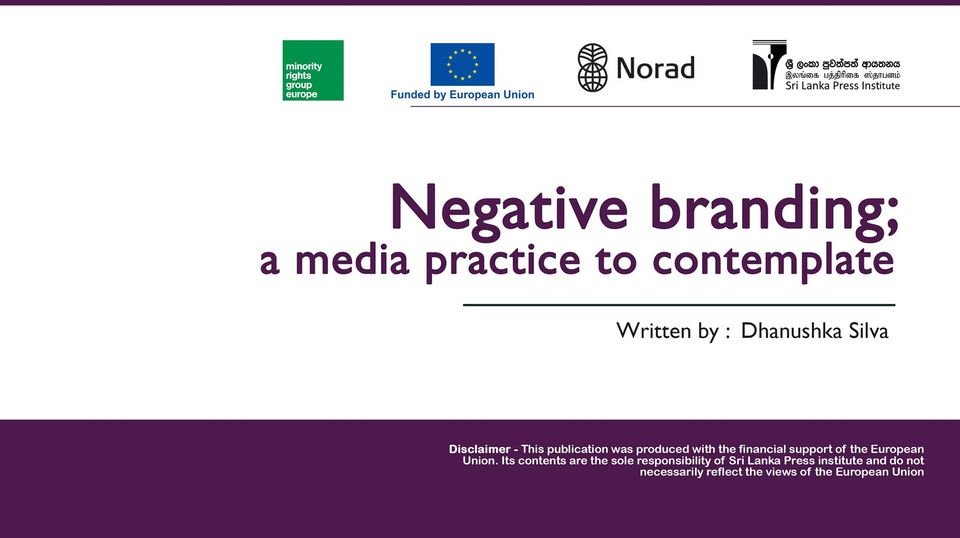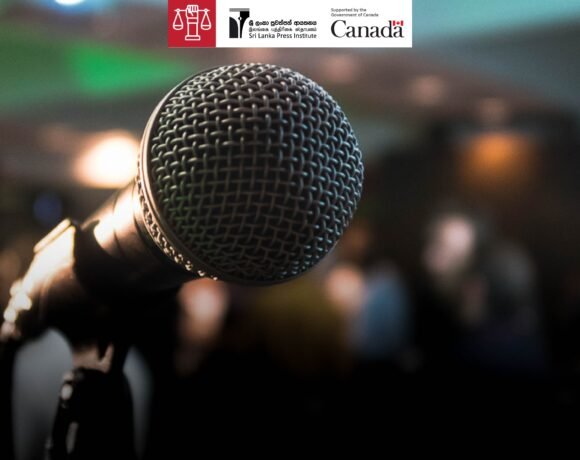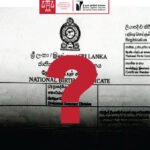
Negative branding; a media practice to contemplate
Dhanushka Silva
The majority of the journalists of Sri Lanka use the Sinhala language, whereas the audience whom the journalists cater is comprised of Sinhala majority. The Sinhala language audience grows faster compared to the English and Tamil audiences. The journalists always try to attract the Sinhala audience because of its comparative massiveness.
The competition for readers among the mainstream newspapers is replicated in social media through their search for views. When we study the news headlines in recent times, we can observe that popular media limit the natural space for the readers to comprehend and brand persons and incidents. The strength of any media is the language medium. The readers apprehend the incident through the language it is reported. Therefore, the language of a newspaper can influence the narrative of an ordinary reader.
However, negative branding is against media ethics that a journalist must follow. Such negative branding misleads the readers through disinformation instead of broadening the understanding of the readers.
When we study the behaviour of print media during COVID-19 pandemic in Sri Lanka, we can observe that the newspapers tend to create narratives instead of reporting information quickly and accurately.
The writers displayed this phenomenon, mainly when they reported about the COVID-19 persons. The following news stories from popular media depict how some headlines were manipulated for this purpose.
- 17 persons who associated the COVID woman of Bangadeniya not infected (Aruna, 31-08-2020)
2. Others sans the COVID student freed from quarantine (Aruna 12-08-2020)
3. A corona mum delivers a baby for the first time in Sri Lanka (Weekend Aruna, 09-07-2020)
4. Two babies born to corona mothers breastfed (Lankadeepa 05-8-2020)
5.How the corona druggie escaped from IDH (Sunday Mawbima, 26-07-2020)
6.Corona druggie who escaped from IDH captured (Lankadeepa, 25-07-2020)
In the above headlines, the patiens are branded by derogatory or disrespectful names like COVID
woman, COVID student, corona mum, corona mums and corona druggie. Their status and behaviours
are highlighted over the fact that they are patients.
This kind of negative branding subtly disseminates disinformation and pave the way for the creation of
wrong information. In medical terms, any human in this world is likely to be affected by COVID-19. The
infection is not their choice, and the spread of the virus is out of their control. Therefore, no person
must be discriminated merely because that person is a COVID-19 patient.
However, the above headlines create a wrong perspective in the minds of the readers on the person
who has been a victim of a situation that is out of that person’s control. The associates of that person
are also subjected to discrimination. They have moved into society and associated other persons
without knowledge about their infection before they are diagnosed positive for COVID-19. However, the
report did not mention that fact. Deliberately avoiding reporting of selected facts related to an incident
misleads the recipient and it is an accepted journalistic principle.
Ultimately, these reports create a wrong picture about the related person and depicts that person as
one who has acted irresponsibly against collective existence of society. The journalists deliberately avoid
using terms like ‘COVID-infected mum’ or ‘student infected by COVID-19’ and uses the negative names
like ‘corona mum’ and ‘COVID student’ further strengthening the negative feelings against the patients.
Reporting, in a way the patients of a specific disease are embarrassed before society violates media
ethics. The journalists who report in that way must rethink whether they can justify their acts.








